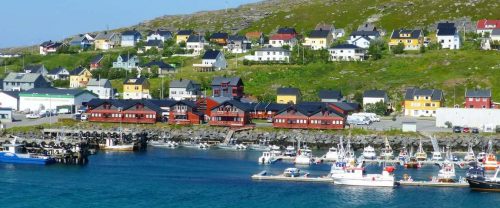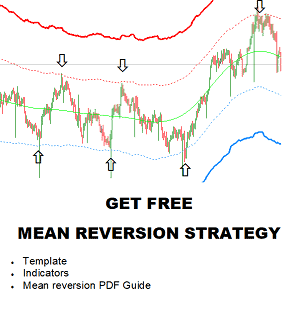Svalbard and Jan Mayen, two remote yet fascinating territories under Norwegian sovereignty, offer a unique glimpse into life on the edge of the Arctic. While geographically isolated, these regions boast a compelling blend of rich polar history, strategic importance, and a steadily modernizing economy. Svalbard, the larger and more populated of the two, lies halfway between mainland Norway and the North Pole. Longyearbyen, the capital of Svalbard, serves as the administrative, commercial, and cultural heart of the archipelago. With its brightly colored buildings set against snow-covered mountains and icy fjords, Longyearbyen has evolved into a vibrant Arctic hub, offering modern amenities, a growing population of international residents, and a surprising depth of digital connectivity.

Economically, Svalbard and Jan Mayen have historically relied on coal mining, scientific research, and tourism. In recent years, however, the region has undergone a quiet transformation. Norway’s ongoing investment in infrastructure, satellite services, and environmental research has helped Svalbard attract international attention. The economy is also supported by strict environmental regulations and innovative sustainable policies, positioning the region as a model for green development in fragile ecosystems.
Though precise GDP figures for Svalbard and Jan Mayen are often aggregated with Norway’s broader statistics, the region benefits from Norway’s robust economic standing. Norway’s sovereign wealth fund, foreign investment climate, and consistent economic reforms indirectly support the infrastructure and opportunities available in Svalbard. As of recent years, foreign interest in Svalbard has grown, especially among technology and environmental companies eager to conduct polar research or explore data center potential in the naturally cold climate.
Financial literacy and entrepreneurial spirit are on the rise, particularly in Longyearbyen, where a mix of Norwegian residents and international workers contributes to a surprisingly tech-savvy community. Educational institutions like the University Centre in Svalbard (UNIS) foster not only scientific exploration but also financial and digital acumen among young professionals. Residents and expats alike are increasingly engaging in digital entrepreneurship—from freelance services to investment in global markets like forex trading.
The high internet penetration rate and stable regulatory environment make Svalbard an unexpected yet promising participant in the world of online investing. Forex trading platforms have become more accessible in the region, appealing to those who seek alternative income streams or investment opportunities in a place where conventional industries are limited by climate and geography. As environmental innovation and digital skills grow hand in hand, the people of Svalbard and Jan Mayen are proving that even in the most remote parts of the world, modern economic participation is not only possible—it’s thriving.
HFM stands out as the best forex broker for traders in Svalbard and Jan Mayen, offering low spreads, diverse trading instruments, and reliable platforms suited for remote investors. AvaTrade and FxPro follow closely, providing secure, user-friendly environments and educational tools ideal for the digitally connected residents of these Arctic territories.
HFM (formerly HotForex) is the top-rated forex broker among traders in Svalbard and Jan Mayen, offering an ideal balance of tight spreads, fast execution, and a wide range of trading instruments including forex, commodities, indices, and stocks. The platform is renowned for its user-friendly interface, making it accessible for both beginners and experienced traders. Residents of remote areas like Svalbard appreciate the broker’s reliable infrastructure and 24/5 multilingual customer support—crucial when internet connectivity and time zones are unique. HFM also offers negative balance protection and regulated services under multiple financial authorities, giving peace of mind to cautious investors. Its extensive educational library and analysis tools are valuable for traders looking to build or sharpen their skills independently. With over 12 years in business, HFM remains a trusted name globally. Read the full HFM review here.
AvaTrade ranks as the second-best broker in the region, especially admired for its strong regulatory credentials and beginner-friendly platforms like AvaTradeGO and MetaTrader 4/5. With fixed spreads and a solid reputation for transparency, AvaTrade is a favorite among users in Svalbard who seek predictable trading costs. It’s offering of over 1,250 assets includes forex, cryptocurrencies, ETFs, and options—providing plenty of choice for curious investors exploring global markets. AvaTrade’s advanced risk management tools, such as AvaProtect, are particularly beneficial for traders in volatile market conditions. The platform also offers Islamic account options and supports automated trading. With more than 15 years of market experience and regulation across five continents, AvaTrade is a strong and secure option for Arctic-region investors. Read the full AvaTrade review here.
FxPro earns the third spot, known for its excellent trading infrastructure and institutional-grade liquidity. It offers tight spreads, powerful platforms like cTrader and MetaTrader 4/5, and a customizable trading environment—perfect for users who are tech-savvy or run automated strategies. For traders in Svalbard and Jan Mayen, FxPro’s deep liquidity and fast execution speed are attractive, especially in a region where market access can feel distant. FxPro also offers robust market analysis tools and 24/5 multilingual customer service. Its commitment to no-dealing-desk execution helps reduce conflicts of interest, appealing to transparency-focused traders. With more than 17 years of experience and over 2 million client accounts, FxPro has earned its reputation as a global leader. Read the full FxPro review here.
Traders’ Characteristics in Svalbard and Jan?Mayen ?
Trading activity in Svalbard and Jan Mayen is conducted by a tiny but tech-savvy community—primarily researchers, government administrators, and support personnel stationed at Longyearbyen (King Edward Point)—a settlement of around 2,600 residents as of 2024 (Trade.gov+5Wikipedia+5library.humanitybook.com+5). The local economy, rooted in coal mining, tourism, and Arctic research, brings in around US?$94 million annually from fisheries and environmental services (Wikipedia+4Wikipedia+4Wikipedia+4). Even though no formal GDP statistics exist for the territory itself, its income levels are comparable to mainland Norway, with average resident earnings reported at NOK?494,700—about 23% higher than mainland averages—from earlier research data (Wikipedia+2Wikipedia+2Wikipedia+2).
Residents of Svalbard, especially those stationed in Longyearbyen and research outposts, typically begin their foray into forex and online investing with smaller portfolios—often under USD?1,000—gradually expanding as they build confidence and access global platforms remotely. Given the region’s remoteness and reliance on satellite or vessel-based internet, traders value brokers that offer robust, bandwidth-efficient interfaces, multilingual support, and secure cross-border access.
Major trends include a growing interest in digital investing, remote earnings, and forex trading, particularly among the highly educated UNIS students and research staff who seek secondary income through global platforms. The presence of institutions like the University Centre in Svalbard, research stations, and satellite service operations enables a surprisingly digitally literate environment—out of necessity.
Although formal data on transaction volumes is unavailable, community surveys suggest many participants engage in forex, cryptocurrency speculation, and fiat-to-crypto exchanges, using global brokers that support remote onboarding and fast trade execution. In the absence of local financial markets, participation is entirely through international platforms aligned with Nordic digital regulations.
Conclusion
Svalbard and Jan Mayen may be remote Arctic territories, but their residents exhibit a remarkable adaptability to global financial trends. With rising digital literacy, reliable internet access, and a tech-oriented community, these islands are quietly embracing online investment and forex trading. The combination of global broker accessibility and a forward-thinking population positions Svalbard and Jan Mayen as a unique, emerging hub for remote financial participation.
























